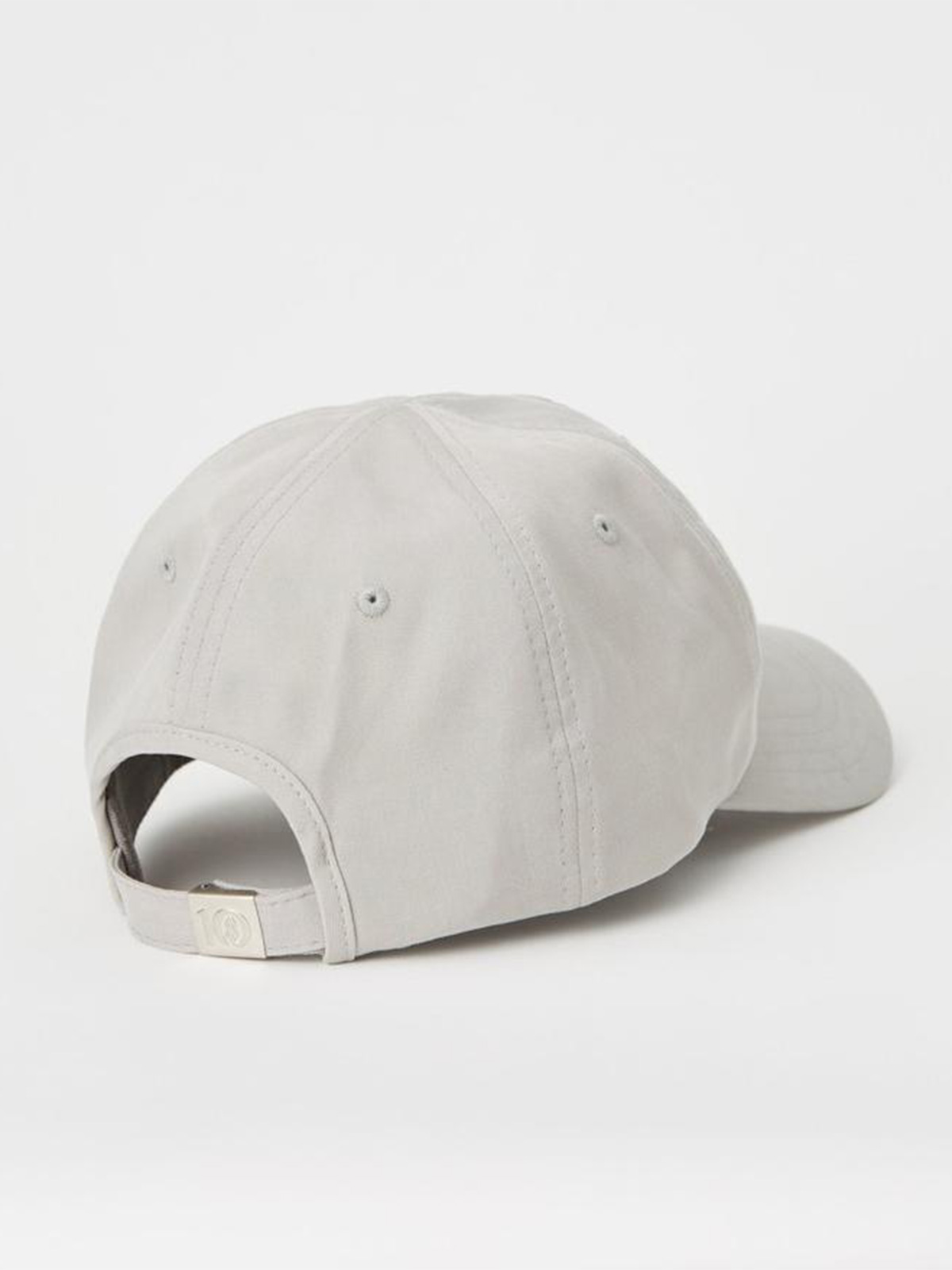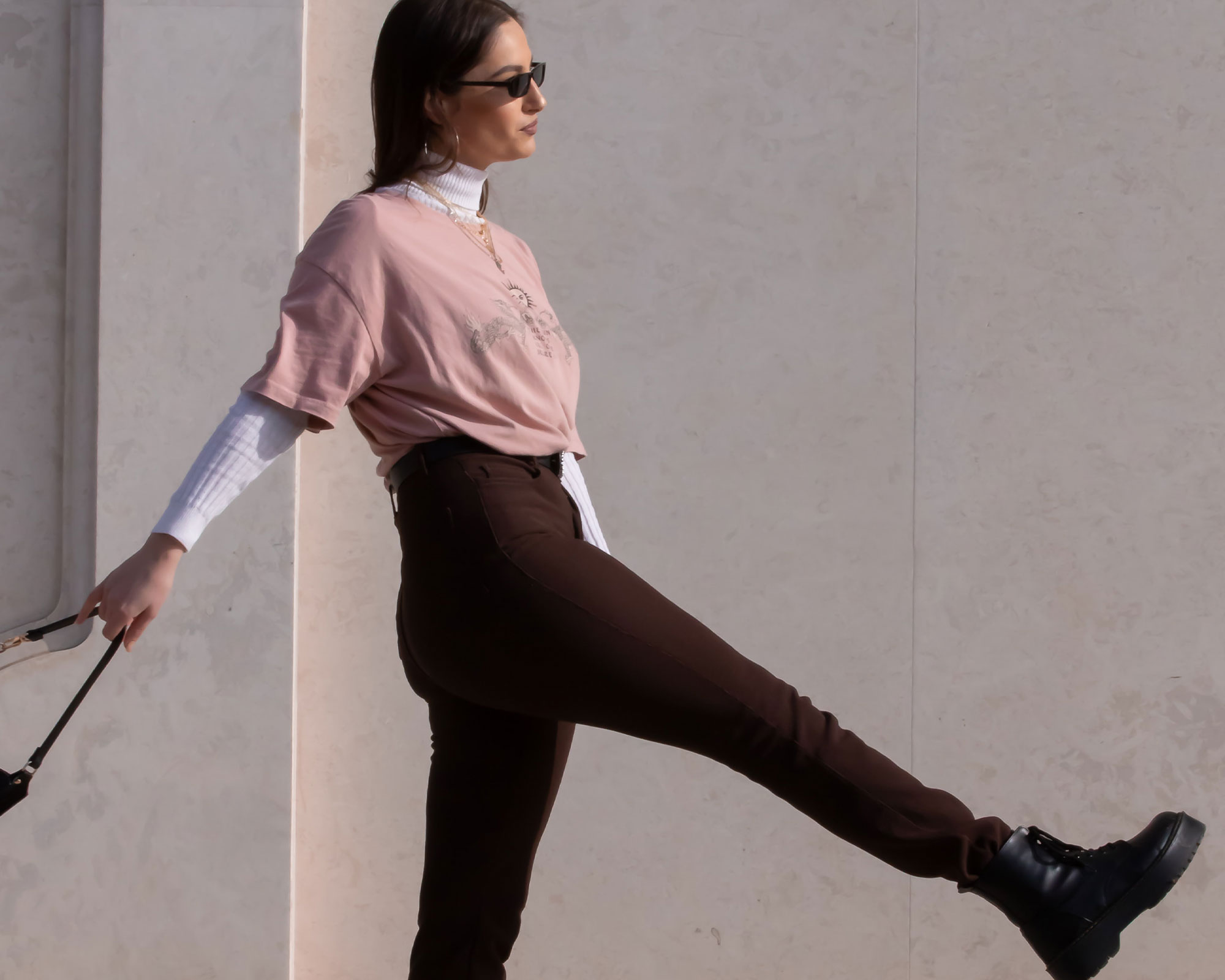It’s time to ditch the unhealthy idea that outfit repeating is a fashion faux pas. Here’s how to rock the same clothes over and over while still looking and feeling fresh.
We’re taught that rewearing is a fashion faux pas
In a culture shaped by fast fashion, one of the biggest modern-day sins you can commit is to wear the same outfit on TikTok or Instagram more than once. Whilst you’d have thought that clothes were purchased to be worn again and again, in the world of online content creation, your wardrobe’s purpose is to warrant a break in scrolling and incite the all-important “like” from a follower. Even sustainable and slow fashion influencers rarely rewear their looks in their quest for constantly updated content.
The stigma around rewearing clothes is deeply ingrained. Research shows that 61% of Brits wouldn’t rewear their Christmas party outfit 12 months later, and a survey of 2,700 people saw 49% of respondents report that they have felt self-conscious about repeating outfits at work. In 2019, the Business of Fashion reported that one in three British women consider garments to be old when they have been worn just once or twice.
When did this stigma around rewearing clothes become so prevalent? News sources have long been gleefully reporting whenever they have “caught” celebrities including Helen Mirren, Mindy Kaling, or Kate Middleton repeating their outfits. And with our own fashion choices regularly showcased online in recent years, it’s unsurprising that the desire for ever-updated looks has translated into our wardrobes.
When we succumb to this pressure to maintain a constantly updated wardrobe, the fashion industry achieves its aim of selling us more products and making a greater profit. On average, items of clothing are worn just seven times before they’re discarded. Embracing outfit repeating is a great way to resist the capitalist ideology that new is always better.
Outfit repeating is caring—here’s why
How can we challenge the idea that rewearing your clothes is a fashion faux pas? We might start by noting that rewearing and outfit repeating does not mean you have to look the same every single day, though that could be a cool minimalist flex if you do it right.
Being confident in your repetitive outfits when everyone around you is desperately trying to switch up their clothes at the cost of the planet is one small action you can take to counter the tides of fast fashion.
Here are five tips to reframe how you think about your wardrobe and outfit repeat endlessly without sacrificing your love of clothes.
Use accessories to your advantage
No outfit truly is the same when you bring accessories into the mix. Changing up the details can bring new energy to what you wore yesterday and maybe the day before.
Firstly, try mixing up the jewellery you style your outfit with—earrings, rings, bracelets, and necklaces can all make a statement or add a subtle sheen to your look. When it comes to your hair, using a scrunchie or silk scarf to accessorise can add drama. The add ons that make you excited about that same jumper-and-jeans combination could be a stylish belt or patterned socks.
Consider where the focus of your outfit is—maybe your scene-stealing oversized hoops are hogging the limelight today. Next week, it could be a silk scarf worn as a necktie. The key here is to focus on what accessories you already have in your wardrobe: let them do the talking while you reach for base layers time and time again.
Voir cette publication sur Instagram
Reject the notion that clothes only have one purpose
The fashion industry thrives off the categorisation of clothes, but a lot of it is fiction to simply sell you more clothes. By telling us that these are work trousers and those are casual pants, they double their profits. One way to challenge that late capitalist lie is by rejecting those boundaries. If you overlook these often-redundant categories, you’ll discover endless opportunities for rewearing the same items without getting bored.
For a day at the office, you could reach for a velvet shirt but layer it over a polo neck—or choose a summer vest underneath an unbuttoned blouse. You could even try a night-out silk slip dress worn over a long-sleeved t-shirt. When it comes to party outfits, your everyday wardrobe can work wonders if you reconsider its uses. Bralettes may be just as skin-covering as your regular going-out tops, so why not wear lingerie to the club with some high waisted jeans? If you’re going for a fancy dinner date, your silk pyjama top may not look out of place as your outfit’s main course.
Catherine Jia is a slow fashion influencer whose page @project.catherine promotes rewearing your favourite clothes. She recommends disregarding the season when creating your next look.
“Try to style clothing pieces that are specifically intended for the opposite season you’re currently in,” she says. “You could wear a bikini top underneath a coat to spice up your outfits in winter or try knee-high boots with a pair of shorts in summer.” Jia recommends learning different ways to tie a t-shirt as an easy starting point to come up with fresh and versatile looks with one basic piece. Here’s ten different ways to wear one top.
Discover the lost art of sewing your own clothes
Sewing your own clothes is a time-consuming process—but investing hours into creating an item guarantees you’ll have far more of a connection with it. When I go on a night out, I often wear the same white velvet top I sewed myself because I created it with parties in mind. My friends may have seen the same look multiple times, but they’ll indulge me with compliments over and over again.
Miranda Griffith is a blogger who shares her sewing projects, tips, and inspiration on @mirry_maker, also discussing why rewearing her home-sewn garments brings her so much joy. Her dungarees have become staples.”I sewed them a few years ago, and I’ve only had to make one minor repair so far,” she says. “Best believe I’ll wear these until they are threadbare or can no longer be mended.”
The skills you learn sewing your own outfits means you’ll be able to make quick repairs, too. Miranda believes that “the care and time spent sewing a timeless piece of clothing plus being able to repair it when needed means that your handmade wardrobe could last decades.”
Build a long-term relationship with your closet and you won’t want to break up
Victoria Frausin, a coordinator at Sewing Café Lancaster and a textile activist, advises us to “notice, connect, and appreciate what you have in your wardrobe. How did that yellow top get there in the first place? Was it a present from someone you love? When was the last time you wore it? Maybe for that scary exam where you ended up doing so well?”
When it comes to our clothes wearing away, Victoria advises finding beauty in the rips in our favourite items: “Mending is a way of documenting as well. A hole in a pair of trousers that was made when hiking with friends on a glorious sunny day—or a mismatched button that had to be replaced because the original one got lost at a festival.”
Loving your clothes deeply is a great way to inspire yourself to wear them to literal pieces. Maybe you inherited an item from a friend or family member, and it holds special meaning. If you buy less often and wear more regularly, you’ll find yourself developing relationships that go beyond seven wears. Paying gratitude to the journeys our clothes have been on with us (or maybe even their previous lives in the case of pre-loved fashion) helps foster that connection and makes rewearing a no-brainer.
Think of the future of your clothes
When you’re tempted to throw away or donate an item of clothing you’re getting bored with, consider where it will actually end up. It may be popular belief that charity shop donations will quickly find a new home, but most donations end up in the trash, too. About 85% of unwanted textiles in North America end up in landfills. The problem, of course, is not thrift stores, which are the more sustainable way to shop. The issue is when fast fashion brands sell us on this idea that donating or reselling our clothes is an excuse to buy more. No amount of purchasing and donating can ever solve our fashion crisis.
We must transform our relationship with our clothes for the planet to survive. Amidst a sea of constantly updated fast fashion, rewearing the same items time and time again is one of the most revolutionary actions you can take.



















